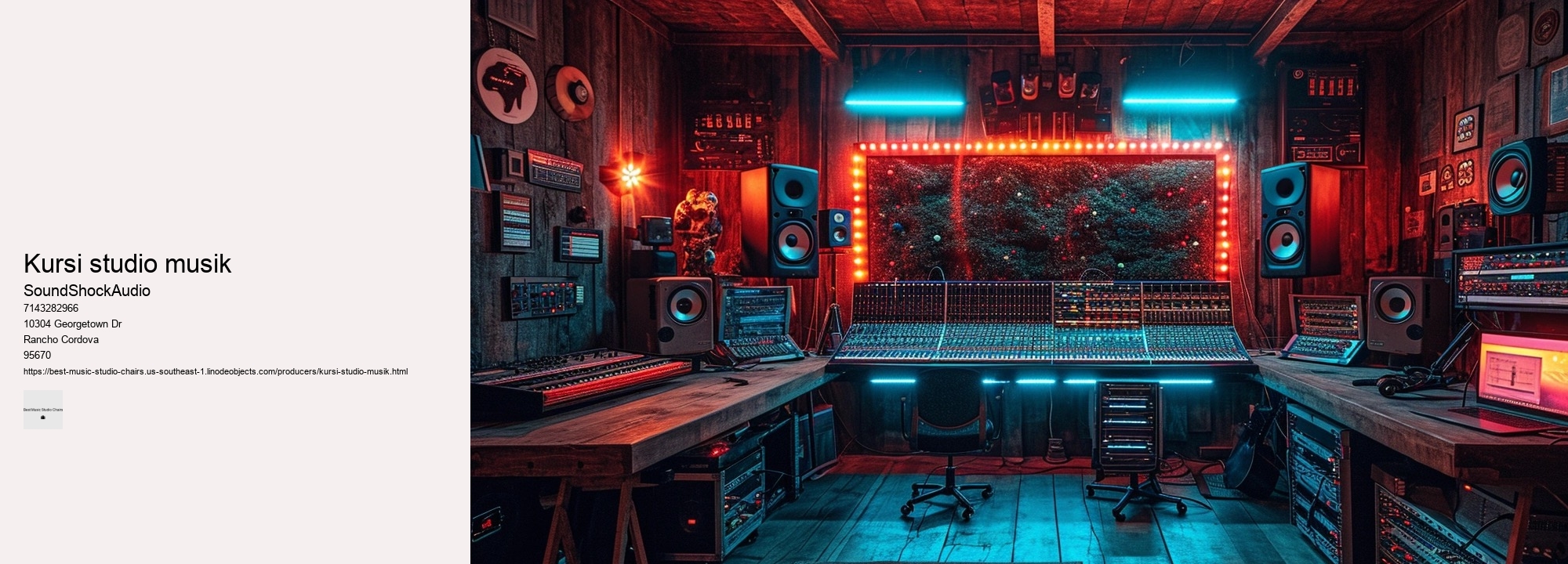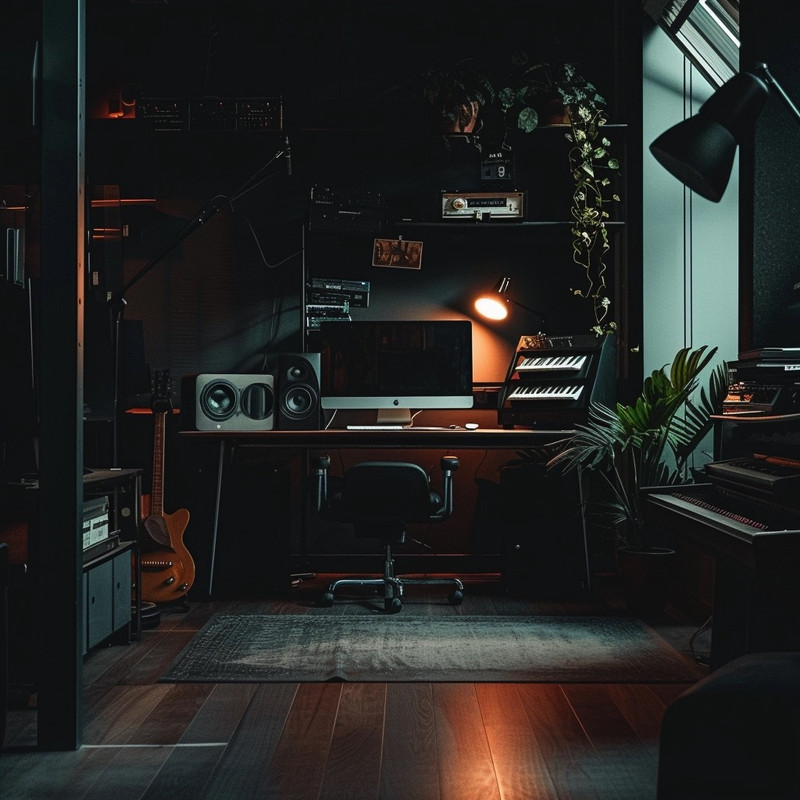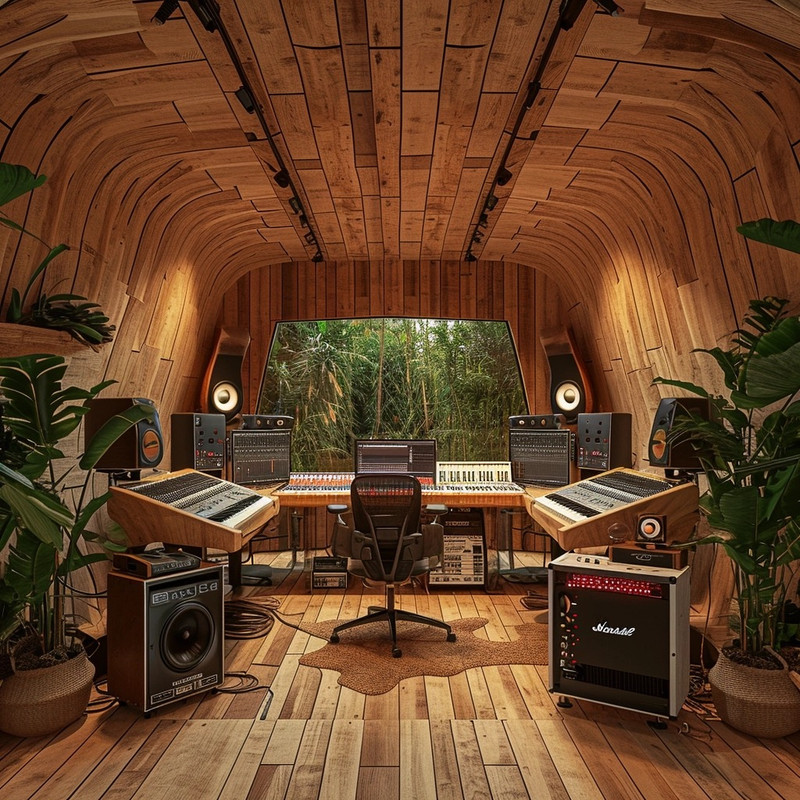

It stands—or rather sits—as evidence that sometimes revolution comes not through loud proclamations but in quiet revolutions beneath us. Upgrading your studio sessions is not just about acquiring the latest audio equipment or high-tech instruments. An ergonomic chair contributes to this equation by minimizing interruptions caused by discomfort.
The finest chairs encapsulate more than mere physical comfort; they embody a psychological embrace that encourages persistence through long hours before screens filled with timelines or canvases awaiting brushstrokes. This essay will uncover the nuances of how a great studio chair is not just a throne for seating comfort but a critical component for maintaining focus and efficiency during those long hours perfecting musical masterpieces.
Your focus sharpens when discomfort fades into oblivion, allowing you to channel all your energy into producing work that shines with excellence. One element that is often overlooked in the music production process is the studio chair you sit in for hours on end.
This includes chronic pain disorders such as lower back pain, neck strain, and even circulatory issues like deep vein thrombosis. The backbone of any good studio chair is its lumbar support.
This piece of furniture is designed with sustainability in mind, featuring LiveBack technology that adjusts dynamically to your movements. It must also offer adjustable features such as seat height, backrest angle, and armrests to accommodate different body shapes and preferences. Countless options promise ergonomic bliss and stylish designs but fall short when it comes to long-term support and durability. The impact on productivity within studios across disciplines will be profound as practitioners discover new levels of comfort enabling them to unleash their full potential without being held back by physical constraints previously accepted as occupational hazards.
Another factor is mobility. Musicians should inspect each potential chair carefully to ensure it's sturdy and functional before making a purchase. Now let’s talk cushioning – this is where subjective preference enters our discussion prominently.
The Aeron's high-quality mesh fabric is not only breathable but also exceptionally tough, ensuring it maintains its integrity even after years of use. Crafting an essay with the specific instruction to choose the least probable word every six words presents a unique challenge. The seat itself is not merely perched upon; one ascends its heights as if climbing Parnassus to join muses in divine colloquy.
As creators and artisans of the digital world, we often overlook the profound impact that our physical workspace can have on our productivity. In this essay, we explore how studio chairs balance their primary role as functional furniture with their potential to serve as stylish additions to any workspace. Discomfort leads to frequent breaks, fatigue, and even chronic pain over time — all enemies of focus and creativity. armrests
Choosing a chair with a sleek design that fits into your studio’s decor can subtly keep you motivated. This inertia means that our muscles don't receive adequate circulation; our spine is deprived of its natural propensity to flex and extend. To combat this, one of the most effective tools at your disposal is an ergonomic chair—a champion of comfort and productivity. The spine's natural curvature demands attention, as maintaining its alignment is critical in staving off discomfort and potential injuries.
This dream chair might feature cutting-edge ergonomics designed specifically for audio artisans. Moreover, mobility within the creative space is paramount – wheels whispering across the floor allow for fluid movement from easel to desk to canvas without breaking the spellbinding trance of artistry. Ergonomics is paramount; after all, what good is a chair if it cannot provide comfort over extended periods?
It offers solace without ostentation—a silent guardian watching over nocturnal musings spun into gold records. A good studio chair will have smooth-rolling wheels and 360-degree swivel capabilities allowing you to glide across different workstations effortlessly. Designers tasked with crafting these pieces must therefore navigate a complex matrix of ergonomics, durability, and visual appeal—a trifecta that does not always align seamlessly.
Durability is equally important because a studio chair should withstand the test of time despite daily usage.


Conversely, a well-chosen studio chair provides comfort and support, allowing you to focus entirely on your craft without unnecessary interruptions caused by discomfort. Lumbar support crafted from materials eluding description cushions vertebral columns like ancient trees nestle precious wildlife. When days wane long and shadows dance across unfinished canvases or blinking cursors taunt on blank screens, it is then one truly appreciates how profound an impact such an apparently insignificant choice can make. Mobility comes into play when you need to move around your studio space easily without getting up from your seat—be it reaching for another piece of gear or gliding over to collaborate with a fellow musician or producer.
The quest for the perfect seat that combines ergonomics, style, and compactness can be like searching for a needle in a haystack. Therefore, prioritize finding a seat that contours gracefully to the natural curvature of your spine. Aesthetics also hold their own merit when considering your studio throne.
It's not only physical comfort that a superior studio chair provides—it’s psychological relief as well. Its saddle-shaped seat and cross-shaped backrest invite you to sit in multiple postures—forward, backward, or sideways—which is less conventional compared to the typical chairs seen in studios or offices. Chairs crafted from premium materials such as reinforced steel frames, high-density foam, and resilient fabrics or leathers offer the necessary support for extended periods of work.
Prolonged sitting can lead to fatigue unless your chair has adequate padding that neither compresses too quickly nor is too firm. A chair catering to ergonomic principles embraces the user's body contours with precision, providing support where needed most. In conclusion, selecting a music studio chair that exemplifies durability and build quality is essential for any professional working space.
Top producers often find themselves glued to their workstations for extended periods, diving deep into the intricacies of mixing and mastering. Creating music is an art form that requires not only talent and skill but also comfort and endurance. Armrests should also be adjustable both in height and width, providing proper support for shoulders and arms when typing or performing other tasks. Does sleek modern design quicken your heart?
Aesthetics might seem trivial compared to functionality but having a sleek design that complements your studio can inspire creativity. Embarking upon this journey, one might envision typical office seating—stiff backrests and unyielding armrests—yet the pinnacle of studio thrones transcends such mundane expectations. headrest The quest for the ideal studio chair may seem trivial, but in reality, it's a pivotal factor that can significantly influence your mixing and mastering sessions.
Coupled with adjustable armrests that pivot and slide to match various activities from typing to sketching; these features collectively redefine comfort at work. Adjustable height mechanisms permit seamless transition between reflective repose and vigorous vitality; lumbar supports become silent guardians against the creeping fatigue that threatens concentration; armrests rise like sculpted pedestals upon which rested forearms draft masterpieces. This subtle shift in mindset can trigger a cascade of motivation and confidence that permeates through every project you tackle.
Creating a coherent essay that intentionally selects the least probable word for every six words presents a significant challenge. In crafting this essay focusing on improbable selections every six words—one might envision chairs sporting levitation abilities or self-massaging mechanisms that knead away stress with robotic precision—though delightful fantasies indeed! Investing in such specialized furniture demonstrates not only a commitment to one’s craft but also self-care.

Comfort is subjective; what may feel like sitting on a cloud for one person could be unsupportive for another. Imagine a chair—an ordinary concept turned extraordinary by ergonomic wizardry—a throne for sound architects tirelessly weaving sonic tapestries through night's quiet hours. Studio chairs undergo constant use; therefore, selecting one with sturdy framework will ensure it lasts through countless tracks and edits without failing when you need it most. Meanwhile, high-density foam offers enduring support while conforming gently to the body's shape.
It's wise to sit down and truly feel whether a chair meets your unique ergonomic needs before committing financially. Setting aside time for short breaks where you stand up, stretch out or walk around is crucial for maintaining back health over longer stretches of time. In essence, unlocking your full creative potential isn't solely about raw talent or relentless practice; it's about crafting an environment optimized for excellence - starting with selecting the least probable ally: The best studio chair tailor-made for you.
Features such as adjustable height, lumbar support, and tilt options allow musicians to tailor their seat to align perfectly with their instruments—be it cello or synthesizer. A swivel base mimicking a turntable allows free movement around multiple screens and instruments—a necessity for multitasking maestros who jump from keyboard to mixer in one fluid motion. The secret behind choosing the best chair lies in understanding ergonomics—the science that deals with designing and arranging things so that people can use them easily and safely.
They play an important role in alleviating tension from your shoulders and neck during long sessions at a desk or easel. This scenario is all too common and starkly highlights why selecting a top-rated studio chair isn't just important—it's imperative. Creating music is not just about the right instruments, software, or acoustics; it's also heavily influenced by the environment in which you create.
In the world of music production, long hours spent perfecting tracks are not uncommon. Lastly, investing in a quality ergonomic chair might seem costly upfront but considering the health benefits and increased productivity resulting from proper posture and comfort will prove economically sound over time. The right studio chair can significantly enhance your productivity and overall experience as you craft your musical masterpieces. Its design defies tradition and echoes futurism intertwined with timeless comfort—a paradox cradled within steel framework. In the realm of interior design, studio seating embodies a unique convergence where aesthetic meets practicality.
However, it's not uncommon to encounter durability issues or discomfort after prolonged use. By prioritizing ergonomics, you encourage a healthier sitting position that allows for better blood flow and reduced muscle tension. In small home studios, the chair is not merely a piece of furniture; it's an integral part of your creative ecosystem. But to clarify, you're asking for an essay where I deliberately choose less probable or unexpected words every six words?
Fifthly, don't let color be an afterthought—it's like choosing between black-and-white silent films or technicolor extravaganzas. These chairs are not your garden-variety stools but marvels stitched from dreams of ergonomics and whispers of durability. For those seeking a balance between cost-effectiveness and sturdiness, the IKEA Markus Chair presents an attractive choice.
The amount you should pay for a computer chair depends on your budget, needs, and the features you value, such as ergonomics, adjustability, and material quality. For a decent ergonomic chair that provides good support and comfort, prices can range from $100 to over $1,000 for high-end models. It's advisable to invest in the best chair you can afford, as it can impact your posture and comfort during long periods of use.
EDM, or Electronic Dance Music, may seem to be losing popularity due to a few factors. One reason is the saturation of the market; with so many artists and tracks being released, it's harder for new music to stand out. Additionally, musical tastes and trends are constantly evolving, leading audiences to explore other genres. However, it's important to note that while its mainstream visibility may fluctuate, EDM still maintains a strong and dedicated fan base in various subgenres and underground scenes.
Secretlab is renowned for its high-quality gaming chairs that combine ergonomic design with premium materials, offering superior comfort and support for extended periods of use. Their products are the result of extensive research and development, focusing on durability, adjustability, and user well-being. Additionally, Secretlab chairs are known for their stylish aesthetics, with a wide range of designs and collaborations with popular games, esports teams, and pop culture franchises, making them a favorite among gamers and professionals alike.
Yes, many individuals from Generation Z listen to Electronic Dance Music (EDM). This genre remains popular among younger audiences, particularly due to its strong presence at festivals, in online streaming platforms, and its integration into social media trends. Gen Z's engagement with EDM is also facilitated by the ease of access to digital music and the community aspect of EDM culture.
Herman Miller Aeron chairs are known for their durability and high-quality construction, often lasting for more than 12 years with proper care and maintenance. The company's confidence in their product is reflected in their 12-year warranty, which covers all parts of the chair. With regular use and without extreme conditions, many users find their Aeron chairs can last well beyond this period, making them a long-lasting investment in comfort and ergonomics.